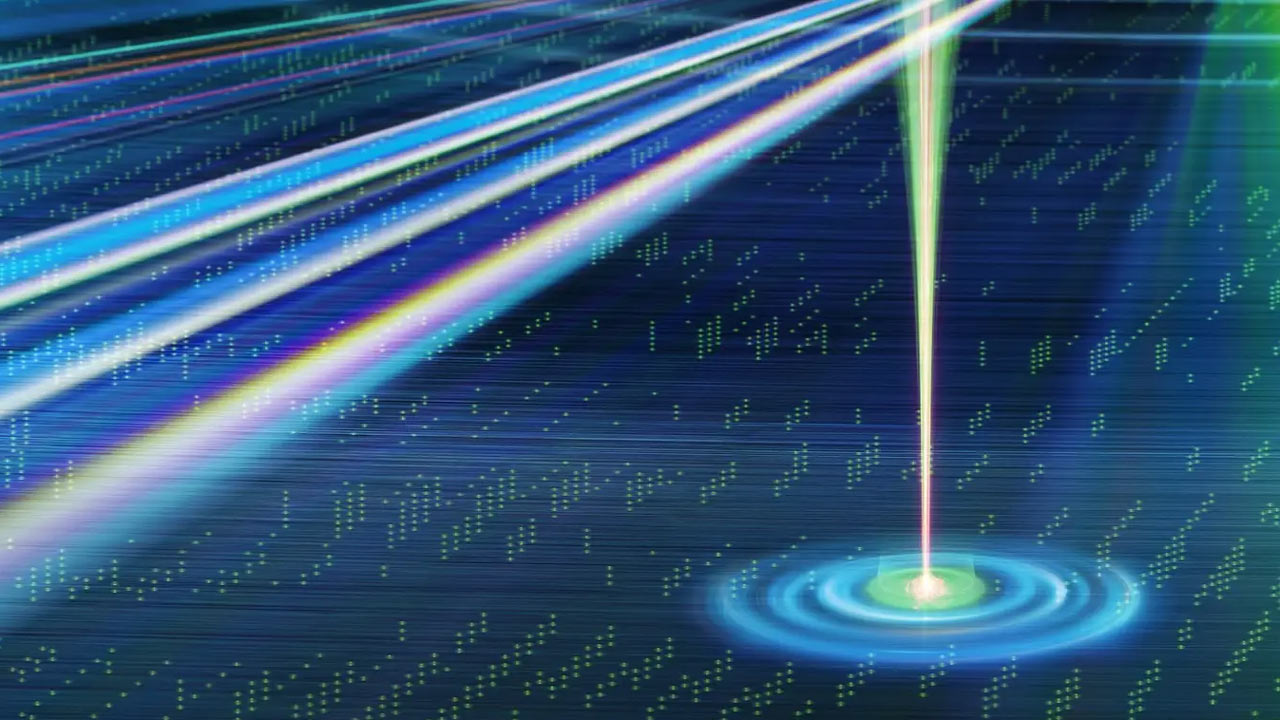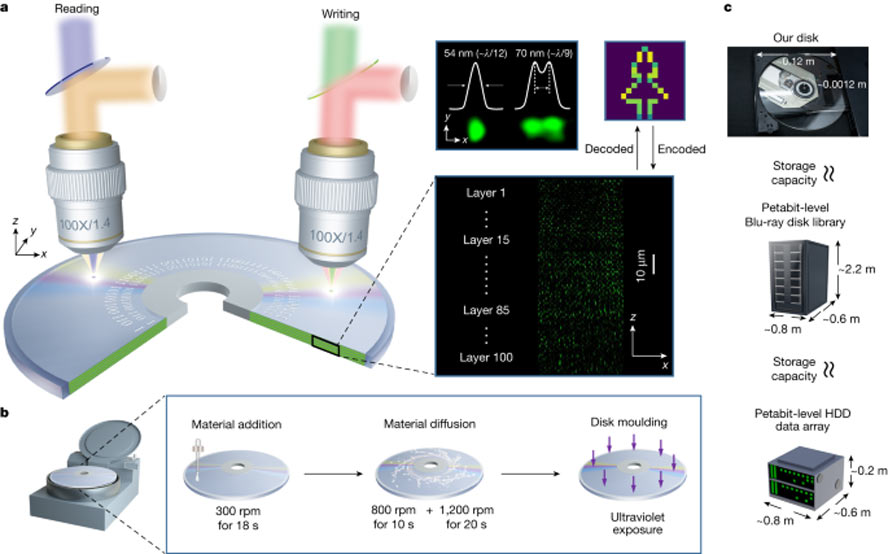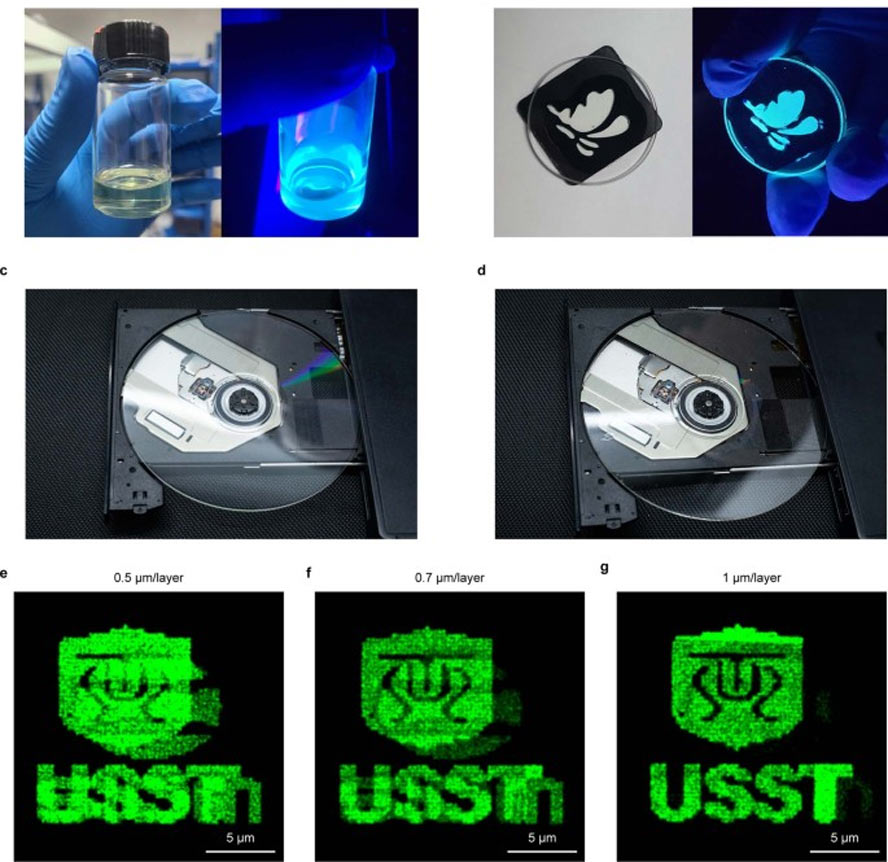Chinese researchers tout optical disk format with up to 125TB capacity
New disks are Blu-ray-size but offer up to 10,000x greater capacity.

Researchers in China have developed a super-high capacity optical disk format that is claimed to hold up to 125TB of data, reports Hong Kong’s SCMP. The new disks are described as outwardly similar to previous Optical Data Storage (ODS) formats like Blu-ray disks. However, thanks to the application of nanotechnology and a 3D stacking architecture, density is boosted by about 10,000 times.
Digital storage requirements are ballooning as the throng of connected organizations and humans wish to save and process increasing amounts of rich data. Therefore, a lot of research is going into delivering storage that pushes the storage envelope in one or more dimensions, aiming to advance speeds, capacity, durability – or a compelling mix of these qualities.
Probably the most urgent digital data crunch to address in one of capacity, and that is the critical target of the new ODS research by scientists from the University of Shanghai for Science and Technology, Peking University, and the Shanghai Institute of Optics and Fine Mechanics, and Key Laboratory of Photochemistry in their paper ‘A 3D nanoscale optical disk memory with petabit capacity.’
The research paper claims to address the data capacity crunch by offering “a promising solution for cost-effective long-term archival data storage.” This solution necessitated several innovations. Firstly, the 3D stacking of hundreds of data layers extended the optical disk data density. Secondly, a photoresist film doped with aggregation-induced emission dye was used for excellent data density on each incredibly thin layer of the disk. Lastly, data reading and writing technologies needed to be tailored for the complex new medium.
For their petabit-barrier busting ODS, the Chinese scientists used a double-sided 120mm disk with 100 layers on either side. However, the disks aren’t any thicker than an optical disk you might use today in your home theater or console gaming setup, as the layers are so thin and fit only one micrometer apart. We don’t have a lot of information about the read / write technology except that the storage mechanism comes from the photoresist film being optically stimulated by femtosecond laser beams with recording spots measured at a super-resolution scale.


It is hoped the new 1.6 petabit (125TB) disks will help prevent any impending data crunch on several levels. “It will thus become possible to build an exabit-level data center inside a room instead of a stadium-sized space by stacking 1,000 petabit-level nanoscale disks together,” said the researchers. Moreover, the new optical disks are claimed to be “highly stable so there are no special storage requirements.” The researchers tout an expected shelf life of 50 to 100 years, which means both data environment control and migration costs could be reduced.
The research team continues to work on this new ODS - improving data transfer speeds, lowering write energy, and making disk hardware more affordable for commercialization.
Get Tom's Hardware's best news and in-depth reviews, straight to your inbox.

Mark Tyson is a news editor at Tom's Hardware. He enjoys covering the full breadth of PC tech; from business and semiconductor design to products approaching the edge of reason.
-
Alvar "Miles" Udell Makes a lot of sense to be able to replace tape drives for cold storage. Lower in capacity than the 500+TB tape cassettes, but having the inherent benefits of optical media.Reply -
slightnitpick Please make a cheaper and more durable 1-layer disk using this technology. 1.25 TB is all I need to back up all of my data.Reply -
Notton My main concern with 125TB/disc would be how long it takes to write or read data from it.Reply -
slightnitpick Reply
I'm also concerned about the cost of the reader and writer.Notton said:My main concern with 125TB/disc would be how long it takes to write or read data from it. -
usertests Reply
They got it published in Nature:thisisaname said:1.6 petabit (125TB) everywhere else I read about this 1.6 petabit is 200TB.
A 3D nanoscale optical disk memory with petabit capacity
https://www.nature.com/articles/s41586-023-06980-y
The title says petabit, which in my book is exactly 125 terabytes or 125 trillion bytes. If 1.6 Pb is mentioned elsewhere, such as the full text of the article, then yeah, that's 200 TB.
The claim itself is believable, other groups have been working on optical/holographic media in the 100 to 1000 terabyte range, for example "5d optical data storage". It doesn't sound like their 200-layer disc would be easy to manufacture or read, and there is likely no path for consumers to get their grubby hands on cost-effective petascale optical storage. -
USAFRet Reply
Why?slightnitpick said:I'm also concerned about the cost of the reader and writer.
Its not a thing yet, just a format and concept. -
slightnitpick Reply
I meant once available for sale. Large storage solutions tend to be too expensive for home use. It would be nice if this was no more expensive than a Blu-ray writer, but I doubt it given the complexity and size.USAFRet said:Why?
Its not a thing yet, just a format and concept. -
usertests Reply
They've apparently matched the size of a compact disc, but the entertainment industry is unlikely to give consumers another physical format (driving costs down). If by some miracle we do see an 8K UHD format, it will probably be between 300 GB and 1 TB, matching Archival Disc or what Folio says it can make. That one also uses a larger number of layers.slightnitpick said:I meant once available for sale. Large storage solutions tend to be too expensive for home use. It would be nice if this was no more expensive than a Blu-ray writer, but I doubt it given the complexity and size.
Cold storage products like Archival Disc are focused on enterprise customers. Consumers have been forced onto the SSD tech tree and the future doesn't look bright. Too bad because cheap and reliable petascale storage would be great for the amateur archivists out there. -
thisisaname Reply
Given the rise in fake research that has been publish I am going wait and see.usertests said:They got it published in Nature:
A 3D nanoscale optical disk memory with petabit capacity
https://www.nature.com/articles/s41586-023-06980-y
The title says petabit, which in my book is exactly 125 terabytes or 125 trillion bytes. If 1.6 Pb is mentioned elsewhere, such as the full text of the article, then yeah, that's 200 TB.
The claim itself is believable, other groups have been working on optical/holographic media in the 100 to 1000 terabyte range, for example "5d optical data storage". It doesn't sound like their 200-layer disc would be easy to manufacture or read, and there is likely no path for consumers to get their grubby hands on cost-effective petascale optical storage.